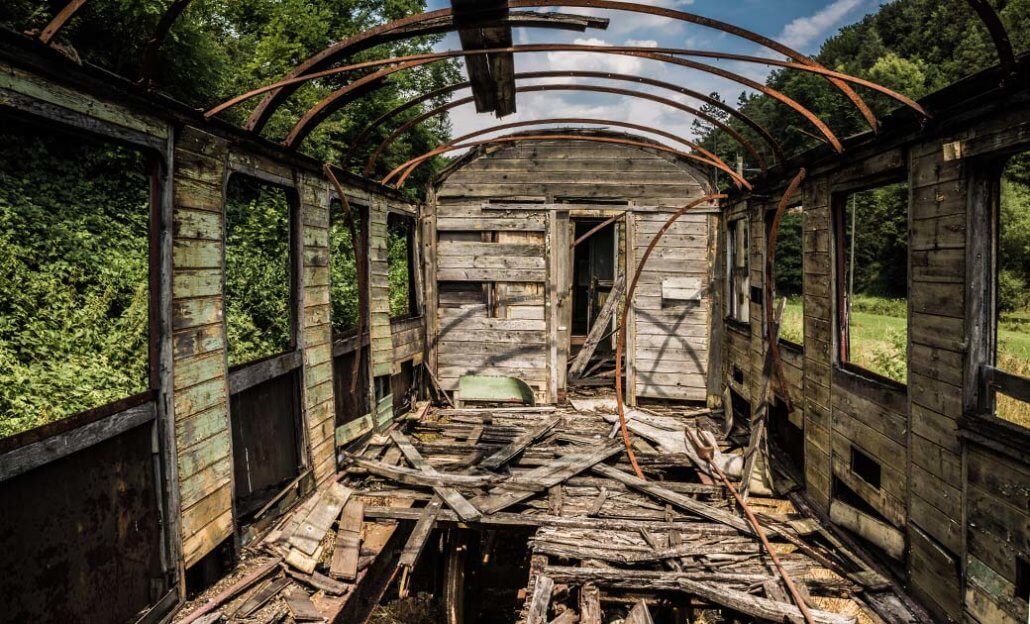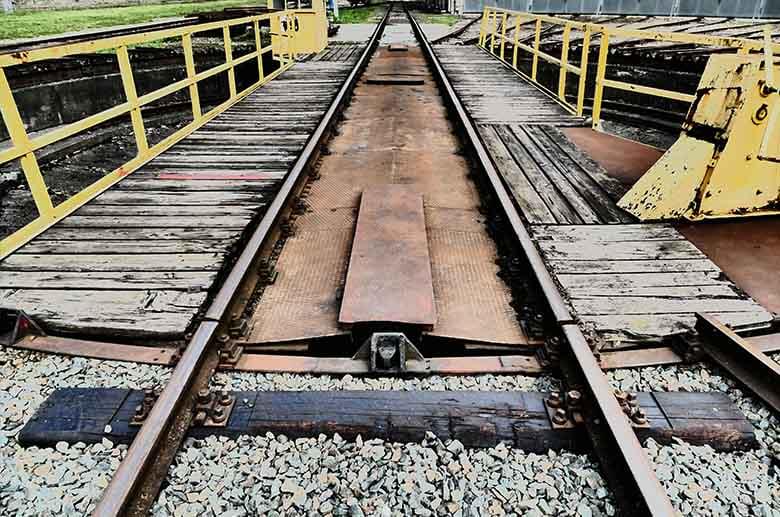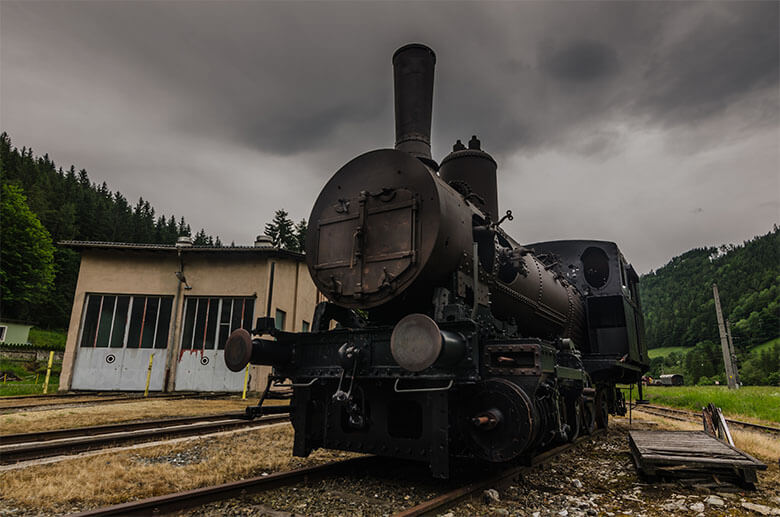
Lost Places Special - Wagons & Trains
Abandoned trains are of interest to train enthusiasts, but also photographers looking for the perfect shot. Old carriages and track beds are popular photo subjects for lost places photography. We give you tips on how to find them and take beautiful pictures.
Special features of abandoned railway tracks and wagons
What looks like an abandoned railway station is usually still privately owned and rarely freely accessible. Therefore, to avoid you must get permission to avoid trespassing. As always, act responsibly and safely and do not destroy or damage anything. Extra care should be taken with abandoned tracks that seem to lead to nowhere, as they may still be in use. It is important to find out in advance whether they are still in use before you go onto the tracks to take photographs.

Finding railway graveyards
There are not many railway graveyards, as often the facilities are renovated, or modernised and old trains are scrapped. However, there are some places where you can find such sleeping giants. The best way to find these places is to search online for photos of old stations or trains. Many photographers share their lost places photographs in forums or on their own websites. You can exchange ideas with them and perhaps find out the location of the wreckages.
However, there are some openly known abandoned railway stations with rustic wagons. But we would like to emphasise again that you should always get permission from the owner before photographing lost places. We have collected a few locations for you:
Etzwilen railway junction (Thurgau)
The disused railway junction in Etzwilen in Thurgau was an important facility for international freight traffic between the 1870s and 1960s. As freight was increasingly transferred to the roads, the railway junction lost importance. Rail traffic was finally shut down in 2004. Today, the SBB uses the tracks as a storage area for temporarily unused and discarded wagons that are waiting to be scrapped.
Kaiseraugst trains (Aargau)
Kaiseraugst sits in the canton of Aargau and at Rinausstrasse 380 there are some old, partly broken wagons. Graffiti artists have covered many of the old wagons, which has made it into quite a special lost place destination.
Le Locle Train Graveyard (Neuchâtel)
Many disused trains and carriages can be found near the building at La-Coté-des-Billodes 4, at the Le Locle train cemetery in the canton of Neuchâtel. The discarded carriages occasionally guarded as vandalism is on the increase in such places.
Abandoned Baden Oberstadt station (Aargau)
In Baden Oberstadt in the canton of Aargau, you won't find any wagons, but you will find an abandoned station. The tracks are well preserved, and the station building is still standing.
‘Grabenkeller’ railway tunnel (St. Gallen)
Below St. Gallen under Blumenbergplatz lies an almost forgotten railway tunnel. No trains have been in use here for over 100 years. After the Rosenberg tunnel was completed in 1912, large parts of the old track were filled in, but a small part of the tunnel remains. After being used as a wine cellar, fire brigade training ground and party cellar, it now stands empty and awaits its further purpose. If you want to take photos here, it is best to contact the city directly and request permission.
As a matter of principle, locations for Lost Places are well-guarded secrets and only passed on to genuine Urbexers (urban explorers). This is the community’s way of protecting such places from vandalism. It is worthwhile to ask lost places photographers for hints on where to find these places.
Photos of abandoned wagons
Lost places photography thrives on highlining how these, once working machines have decayed over time in contrast to how well some parts have been preserved. The mood is usually a mixture of melancholy and devotion, for these long-forgotten places. When photographing abandoned wagons or railway facilities, the focus is on the power and size of the trains. To capture this in the pictures, photographing from a frog's-eye view is a great perspective. The closer you get to the wagon, the more the effect brings the detail out. The outside view can often be an exciting perspective as well as a look from inside a wagon. However, it is usually not permitted to enter disused trains.

When framing the picture, you can ignore the rule of thirds concept and position the train or the tracks in the centre.
Camera settings for capturing trains and carriages
To capture these huge steel machines well, almost everything in the subject should be in focus. With a standard lens, such as the kit lens, use a small aperture of f/11 or higher. To compensate for the lack of light, the exposure time must be increased, and a tripod might be needed. Since we are dealing with stationary objects, you can take your time adjusting the camera settings. Set the lens to the smallest focal length to capture the entire train. The kit lens often comes with a focal length of 18 to 55 mm, which covers the normal lens size (50 mm) and some wider-angle ranges.
Wide-angle refers to lenses with a focal length of less than 50 mm. As a rule, you will not need a larger field of view than what a standard kit lens provides. However, if you use a special wide-angle lens can capture a larger depth of field as a wide-angle lens can produce larger area of focus in the shot despite a wide-open aperture. This means that you do not have to close the aperture too far and can shorten the exposure time.
For detail shots, both outside and inside, you can use longer focal lengths. For example, if you want to bring a particular detail into focus, you can open the aperture as far as possible to create more background blur. You will need to shorten your exposure time so as not to overexpose the shot.
Another popular method of capturing old machinery is HDR photography. These are shots with a high dynamic range, which you can only create with several exposures.
Conclusion
Abandoned railway stations and wagons give a magical feeling. The discarded and forgotten machines give us an idea of how many kilometres they travelled, connecting goods and people along the way. When photographing such lost places, safety always comes first. Many railway facilities or wagons are not abandoned, but usually belong to larger companies or are leased out. It is essential to obtain permission to take photographs in advance so as not to commit a criminal offence. In other articles about lost places, we will give you further advice.
When photographing lost places, always remember: "Take nothing but photos and leave nothing but footprints”
